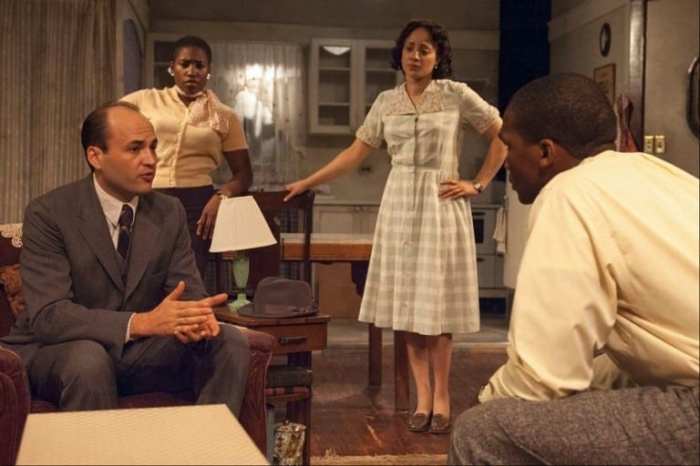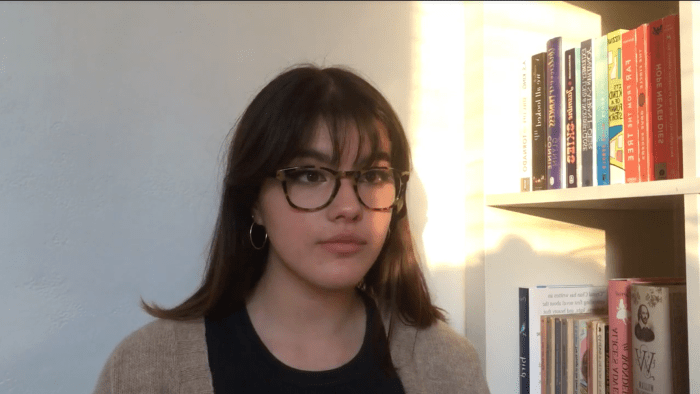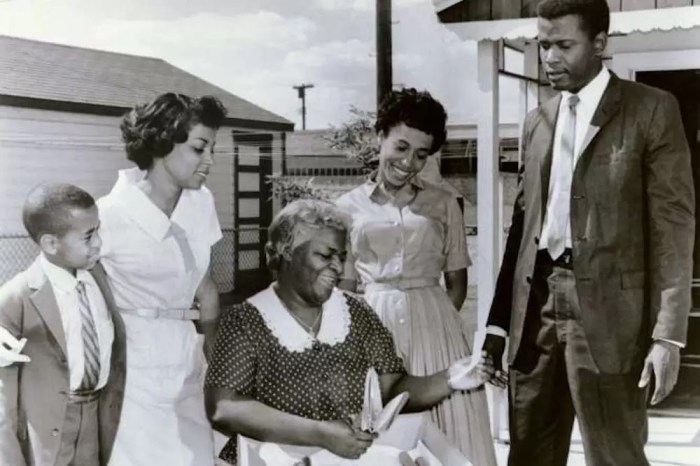Raisin in the sun monologue – As the “Raisin in the Sun” monologue takes center stage, it invites us into a world of unyielding dreams and the harsh realities that can crush them. This powerful piece, spoken by the character Walter Lee Younger, is a testament to the human spirit’s resilience and the challenges it faces in the face of adversity.
The monologue unfolds in the cramped confines of the Younger family’s apartment, where Walter’s aspirations for a better life clash with the limitations imposed by society and systemic racism. His words paint a vivid picture of the struggles faced by African Americans in the mid-20th century, and his passionate delivery resonates with audiences to this day.
Plot Overview: Raisin In The Sun Monologue

The central conflict of the monologue revolves around the Younger family’s struggle to find a better life amidst the challenges of systemic racism and economic hardship.
The monologue is set in the South Side of Chicago in the 1950s, where the Younger family lives in a cramped and dilapidated apartment. The family has recently received an insurance payout from the death of the father, and they are debating how to use the money to improve their living conditions.
The events leading up to the monologue include the family’s decision to move to a new home in a white neighborhood, which sparks tensions with their white neighbors. The family also faces financial difficulties, as the father’s insurance payout is not enough to cover the costs of a new home and other expenses.
Character Analysis

Walter Younger, the speaker of the monologue, is a complex and multifaceted character. He is a proud and ambitious man, but he is also frustrated and disillusioned by the limitations imposed on him by his race and his economic status.
Walter’s use of language and imagery reveals his inner thoughts and emotions. He speaks in a passionate and urgent tone, using vivid and powerful language to express his anger and frustration. He frequently uses metaphors and similes to compare his situation to that of other African Americans who have been denied opportunities due to racism.
Walter’s Personality
Walter is a strong-willed and determined man. He is not afraid to speak his mind, even when his opinions are unpopular. He is also a dreamer, and he believes that he can achieve great things if he is given the opportunity.
Walter’s Motivations
Walter is motivated by a desire for a better life for himself and his family. He wants to be able to provide a good home for his wife and children, and he wants to be able to give them the opportunities that he never had.
The famous monologue from “A Raisin in the Sun” resonates with its themes of hope and aspiration. The characters’ dreams are intertwined with financial challenges, a topic explored in depth at the JA Finance Park . Through interactive simulations, visitors learn about budgeting, investing, and managing debt, skills that empower them to pursue their financial goals and break free from the limitations of poverty, echoing the transformative power of the play’s message.
Walter’s Use of Language
Walter uses language to express his anger and frustration. He frequently uses metaphors and similes to compare his situation to that of other African Americans who have been denied opportunities due to racism.
Walter’s Inner Thoughts and Emotions, Raisin in the sun monologue
The monologue reveals Walter’s inner thoughts and emotions. He is angry and frustrated by the limitations imposed on him by his race and his economic status. He is also hopeful and determined, and he believes that he can achieve great things if he is given the opportunity.
Themes
Lorraine Hansberry’s monologue in “A Raisin in the Sun” delves into profound themes that resonate throughout the play. These themes explore the struggles and aspirations of African Americans in the mid-20th century and their pursuit of equality and dignity.
Dreams and Aspirations
The monologue emphasizes the importance of dreams and aspirations in the face of adversity. Beneatha’s desire to become a doctor represents her ambition to break societal barriers and achieve her full potential. Her dream serves as a symbol of hope and determination for her family and community.
Family and Community
The monologue also highlights the significance of family and community in providing support and resilience. The Younger family’s unwavering bond helps them navigate the challenges they face. Beneatha’s aspirations are supported by her brother Walter and her mother Lena, who recognize the importance of education and personal growth.
Identity and Self-Acceptance
Beneatha’s monologue explores themes of identity and self-acceptance. She grapples with her African heritage and her place in American society. Through her struggle, she learns to embrace her unique identity and to value her own worth.
Racial Injustice and Inequality
The monologue confronts the pervasive racial injustice and inequality that African Americans faced in the 1950s. Beneatha’s experiences with discrimination and prejudice underscore the systemic barriers that prevented Black people from achieving their full potential.
The Power of Resistance
Despite the challenges she faces, Beneatha’s monologue conveys a message of resistance and empowerment. She refuses to be defined by the limitations imposed upon her and instead chooses to fight for her dreams and her dignity.
Literary Devices

The monologue is rich in literary devices that enhance its meaning and impact. These devices create vivid imagery, evoke emotions, and reinforce the speaker’s message.
Metaphors
Metaphors are used to create vivid comparisons between two things. For example, the speaker compares his life to “a bucket of ashes” to convey a sense of emptiness and despair. This metaphor powerfully captures the speaker’s feelings of worthlessness and hopelessness.
Similes
Similes use “like” or “as” to compare two things. In the monologue, the speaker compares his dreams to “a raisin in the sun” that is “just a dried-up nothing.” This simile emphasizes the speaker’s sense of disillusionment and the futility of his aspirations.
Symbolism
Symbolism uses objects or ideas to represent something else. In the monologue, the “raisin in the sun” symbolizes the speaker’s dreams and aspirations. The fact that the raisin is “dried-up” and “nothing” reflects the speaker’s belief that his dreams are unattainable and meaningless.
Performance Considerations

Performing the monologue from “A Raisin in the Sun” presents both challenges and opportunities for actors. The monologue is a powerful and emotional piece that requires a deep understanding of the character and the context of the play.
One of the key challenges for actors is conveying the speaker’s emotions and intentions effectively. The monologue is filled with a range of emotions, from anger and frustration to hope and determination. The actor must be able to convey these emotions in a way that is believable and engaging for the audience.
Another challenge is the length of the monologue. It is a substantial piece of text, and actors must be able to maintain their energy and focus throughout the performance. They must also be able to pace themselves effectively so that the monologue does not become monotonous or rushed.
However, the monologue also presents opportunities for actors to showcase their skills. The monologue provides a chance for actors to explore the character’s inner thoughts and motivations. They can use their voices and bodies to create a vivid and memorable performance that will stay with the audience long after the curtain falls.
Staging and Delivery
The staging and delivery of the monologue can have a significant impact on its effectiveness. The actor should choose a stage position that allows them to connect with the audience and create a sense of intimacy. They should also use their voice and body language to create a dynamic and engaging performance.
The actor should also consider the pace and rhythm of their delivery. The monologue should be spoken at a natural pace, but the actor should also vary their speed and volume to create emphasis and build tension. The actor should also use pauses and silences effectively to create moments of reflection and anticipation.
By carefully considering the staging and delivery of the monologue, actors can create a powerful and moving performance that will resonate with audiences.
Historical and Cultural Context
Lorraine Hansberry wrote A Raisin in the Sunin the midst of the Civil Rights Movement. The play reflects the social and political turmoil of the era, particularly the struggles faced by African Americans in the United States.
Racial Inequality
- The monologue highlights the pervasive racism that Black Americans faced in housing, employment, and education.
- The Younger family’s dream of moving into a white neighborhood represents the larger struggle for racial equality and integration.
Economic Disparity
- The play exposes the economic disparities between Black and white Americans.
- Walter Lee’s financial struggles symbolize the systemic barriers that limited economic opportunities for African Americans.
Impact on Contemporary Audiences
A Raisin in the Suncontinues to resonate with contemporary audiences because it speaks to the enduring issues of racial inequality and economic injustice. The monologue serves as a reminder of the struggles faced by previous generations and inspires ongoing efforts to create a more just and equitable society.
Critical Reception
The monologue from A Raisin in the Sunhas garnered critical acclaim for its poignant portrayal of the experiences of African Americans in the 1950s. Critics have praised its authenticity, emotional depth, and historical significance.
Interpretations and Perspectives
The monologue has been interpreted in various ways. Some critics see it as a powerful indictment of racial discrimination and the systemic oppression faced by African Americans. Others view it as a testament to the resilience and determination of the human spirit.
Still others interpret it as a critique of the American Dream, suggesting that it is often unattainable for those who face discrimination and poverty.
Place in Literary History
The monologue is considered a seminal work in African American literature. It is widely anthologized and studied in schools and universities. The monologue’s powerful language and emotional resonance have made it a touchstone for discussions of race, identity, and the American experience.
FAQ Summary
What is the main conflict of the “Raisin in the Sun” monologue?
The main conflict of the monologue is Walter Lee Younger’s struggle to balance his dreams of financial success with the limitations imposed by society and systemic racism.
How does the monologue reveal Walter Lee Younger’s inner thoughts and emotions?
The monologue reveals Walter Lee Younger’s inner thoughts and emotions through his use of vivid imagery, passionate language, and stream-of-consciousness delivery.
What are some of the major themes explored in the “Raisin in the Sun” monologue?
Some of the major themes explored in the monologue include the struggle for equality and justice, the power of dreams, the resilience of the human spirit, and the challenges faced by African Americans in the mid-20th century.